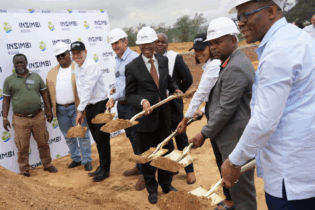The Freightliner Inspiration Truck with Highway Pilot system is the world’s first autonomous truck to be granted a license for road use in the State of Nevada.
The Inspiration Truck is now the next milestone on the road to series production of the Highway Pilot system. The development engineers of Daimler Trucks transferred the system to the US brand Freightliner and modified it for use on American highways. The result: the State of Nevada certified no less than two Freightliner Inspiration Trucks for regular operations on public roads. The Freightliner Inspiration Truck is based on the series-produced US Freightliner Cascadia model, but with the addition of the Highway Pilot technology. The latter comprises a front radar and a stereo camera plus tried and tested assistance systems such as the Adaptive Cruise Control, as seen in the standard Freightliner Cascadia models and the Mercedes-Benz Actros. For licensing on public roads in Nevada, the technology was further developed and the excellent interaction of components extensively tested.As soon as the Freightliner Inspiration Truck is safely on the highway, the driver can activate the Highway Pilot system. The driver receives a visual prompt in the instrument cluster to activate the Highway Pilot. The vehicle switches to autonomous mode and adapts to the speed of traffic and then the driver receives a confirmation message in the instrument cluster.
The Highway Pilot system uses a complex stereo camera and radar systems with lane-keeping and collision-prevention functions. It regulates the speed, applies the brakes and steers. This combination of systems creates an autonomous vehicle that can operate safely under a wide range of driving conditions – the truck automatically complies with posted speed limits, regulates the distance from the vehicle ahead or uses the stop-and-go function during rush hour. The Highway Pilot system does not initiate autonomous passing manoeuvres, as these have to be executed by the driver. The same applies for leaving the highway and changing lanes. Via the user interface the Highway Pilot keeps the driver visually informed about its current status and accepts instructions. The driver can deactivate the Highway Pilot manually and is able to override the system at any time. If the vehicle is no longer able to process crucial aspects of its environment, e.g. due to road construction or bad weather, the driver is prompted to retake control. In addition to a visual prompt in the instrument cluster there is also a subsequent audible notification.







